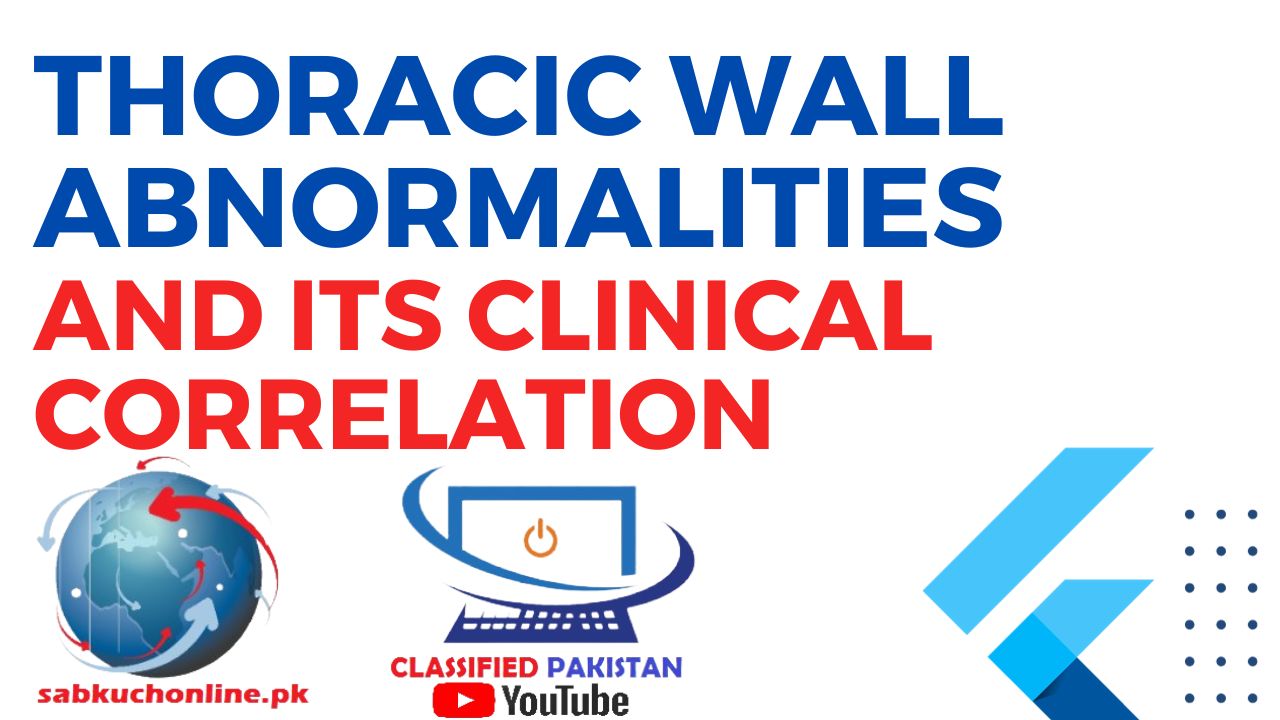Abnormalities of the thoracic wall can manifest in various ways and may be congenital or acquired. These abnormalities can have clinical implications, affecting respiratory function, cardiac function, and overall thoracic structure. Here are some thoracic wall abnormalities and their clinical correlations:
- Pectus Excavatum:
- Description: Pectus excavatum, also known as “funnel chest,” is a congenital deformity where the sternum and costal cartilages are depressed, creating a concave or “funnel” shape.
- Clinical Correlation: Severe cases may compress the heart and lungs, potentially leading to cardiopulmonary issues. Mild cases may have cosmetic concerns.
- Pectus Carinatum:
- Description: Pectus carinatum, or “pigeon chest,” is a chest wall deformity characterized by a protrusion of the sternum and costal cartilages.
- Clinical Correlation: While it can affect lung function in severe cases, the primary concern is often cosmetic. It may lead to self-esteem issues, especially in adolescents.
- Scoliosis:
- Description: Scoliosis is a lateral curvature of the spine, which can result in a rotational deformity of the thorax.
- Clinical Correlation: Severe scoliosis may compromise lung function due to changes in thoracic shape and rib cage distortion. Cardiac function can also be affected in cases of significant spinal curvature.
- Kyphosis:
- Description: Kyphosis is an exaggerated forward curvature of the thoracic spine, leading to a hunchback appearance.
- Clinical Correlation: Severe kyphosis can affect lung capacity and respiratory function, leading to reduced chest expansion.
- Rib Abnormalities:
- Description: Variations in the number, size, or shape of ribs can occur, such as rib agenesis or extra ribs (supernumerary ribs).
- Clinical Correlation: Depending on the extent, these abnormalities may impact lung development, chest stability, and overall thoracic structure.
- Poland Syndrome:
- Description: Poland syndrome is a congenital condition characterized by the absence or underdevelopment of the chest muscles on one side, often associated with underdevelopment of the hand on the same side.
- Clinical Correlation: The absence of chest muscles can lead to functional and cosmetic concerns. Surgical reconstruction may be considered for severe cases.
- Flail Chest:
- Description: Flail chest occurs when multiple consecutive ribs are fractured in two or more places, leading to a segment of the chest wall that moves independently during respiration.
- Clinical Correlation: Flail chest is a serious injury that can result in paradoxical chest movement, respiratory compromise, and the potential for lung contusions. It requires prompt medical attention.
- Tietze Syndrome:
- Description: Tietze syndrome is characterized by painful swelling of the costosternal, costochondral, or costovertebral joints, often accompanied by redness and tenderness.
- Clinical Correlation: While it does not typically affect lung function, the pain and discomfort associated with Tietze syndrome may require pain management and anti-inflammatory treatment.
Understanding these thoracic wall abnormalities is crucial for healthcare professionals, as they may impact respiratory function, cardiovascular health, and the overall well-being of individuals. Treatment approaches vary depending on the severity and clinical implications of each abnormality. Early diagnosis and intervention can be essential in managing these conditions effectively.
